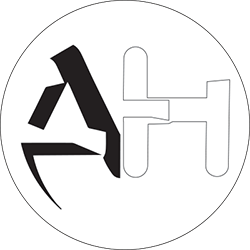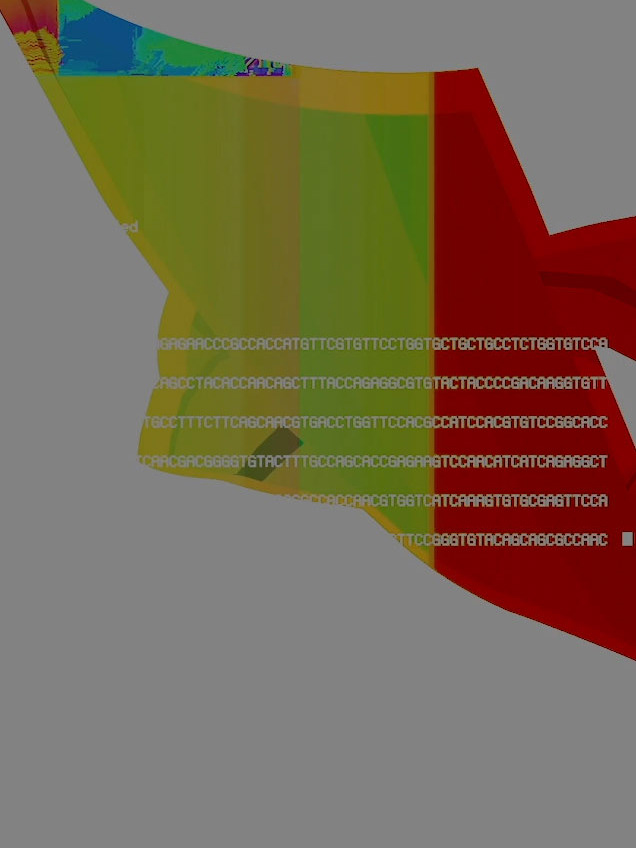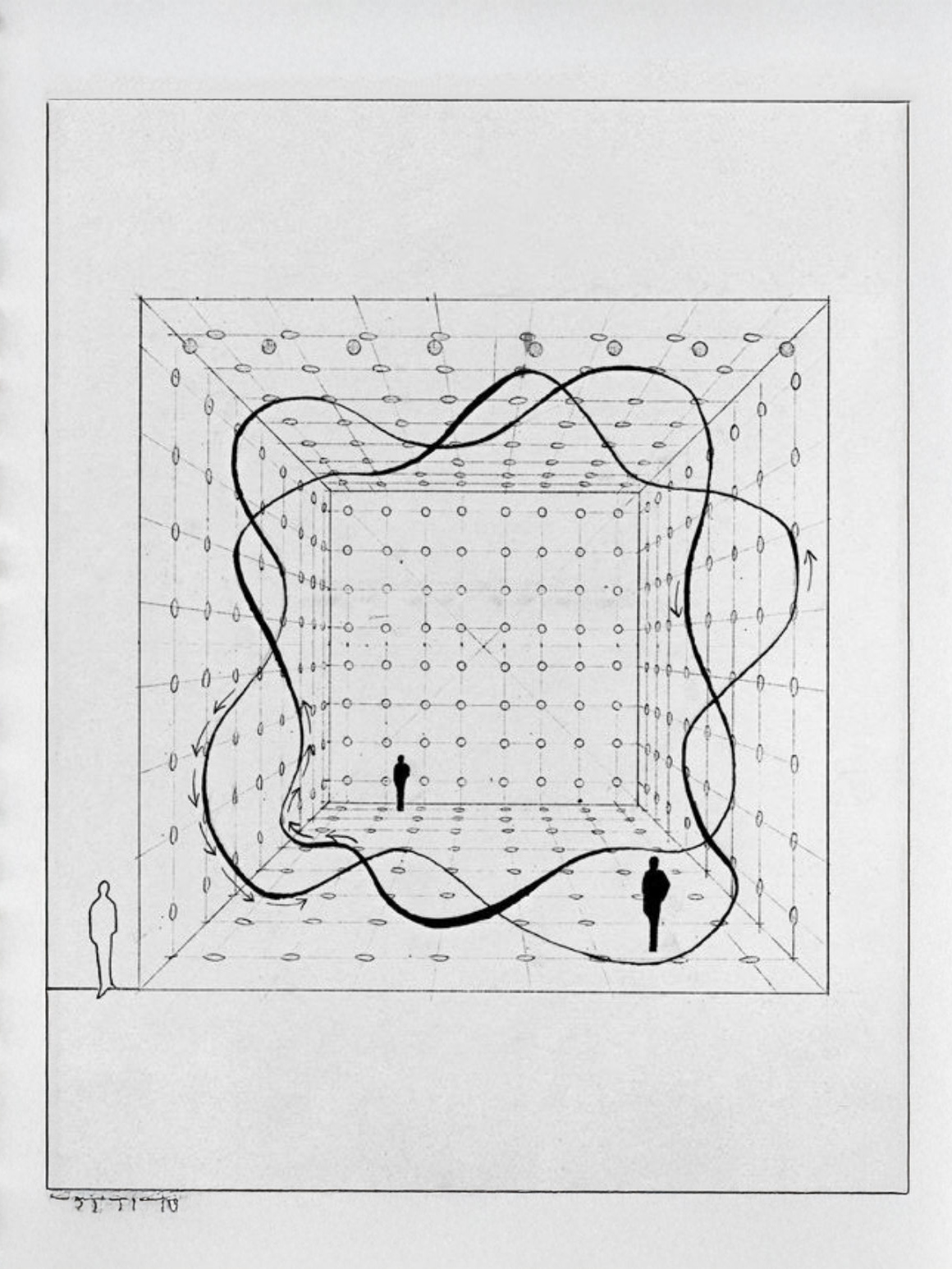Initial Collaboration & Discovery
I met and worked with Dave at Delirium, an exhibition we were both involved in at Dalston, London earlier in 2020. Dave works in the AV industry with experimentation as part of his DNA, so his interest in AR came as no surprise. When I received a copy of his new album, NonLinearthe, I'll confess I had no real expectations.
I put it on for a quick listen, expecting to skim through it. Every track seemed to possess a unique character - there's remarkable diversity and so many different, striking sounds. Comforting warm synths are soon replaced with squalid bleeps and basslines. Much to my daughter's embarrassment, I found myself bouncing around the room by the time Aerolith played. I listened to it repeatedly.
There are numerous early 90s electronic music references - some samples sound like they're from those old sample packs that were sometimes only available on DAT. Then the penny dropped: they are from those sample packs because the entire album is analogue. Dave explains: "Many of the tracks were just little recorded pieces I made during the process of selling loads of synths last year that I developed into tunes."
Aesthetic Philosophy & Visual Approach
Dave's work is analogue and possesses a rawness that's rare in today's polished, digital, over-processed world. I can genuinely feel the energy flowing through his compositions. I wanted to match that energy with visuals that were equally raw and minimal, without detracting from the album.
Monochrome is understated yet stands on its own. A strong logo design needs to work in black and white, so I applied this design concept to the visuals - they need to punch through and work without any colour distractions.
Dave's a fan of laser oscilloscopes, and he's used one to output these shapes. The same laser oscilloscope also features in his partner and Oram Award winner Loula Yorke's live sets. There's something beautifully simplistic about these shapes.
Digital Oscilloscope Development
I liked the idea of creating similar minimal, linear shapes in monochrome, but with more control over the output and letting the audio drive the visuals on a level that wasn't possible with the physical laser oscilloscope.
Consequently, I began investigating what a digital oscilloscope could look like. Starting with a simple grid of X and Y coordinates, I created oscillation of this grid from the audio triggering displacement on the Y axis. This really formed the basis of the entire project - the rest was making it visually compelling.
I forced myself to tweak only a limited number of parameters: X/Y gain, twist, rotation, and creation of a circular radius were essentially all I used. I also employed different cameras and angles to get right into the composition, with no lights used at all.
Process Philosophy
The approach was stripped back to the bone, focusing on form as the most appealing aspect - presenting the composition in its naked glory. It's not 100% processing; much of the camera movement and positioning is my choice, creating a mix of curation and processing. That aspect interested me particularly - I'm not a coder, and generating artwork for me always involves substantial human interaction.
The concept felt solid at this point, but perhaps too fluid to marry with Dave's raw, analogue sound. I kept refining my process, which eventually became a hybrid of generative art and human curation. The visuals developed into a process like making timeline-based electronic music: work out the concept, determine what tools to use, then find a hook within each composition, changing parameters until achieving the desired aesthetic.
The Circle Motif
Eventually, a more lo-fi aesthetic developed. There's a recurring circle throughout the work. My favourite album track was Aerolith - his music video uses a circle, so mine followed suit. In fact, in all of them the circle is at the centre; they've just become very abstract.
Investigating waveforms led me to discover wave-particle duality and diffraction, where I kept finding the circle featuring in all cases. A couple of tracks - particularly Neither - led to further development. The chords are so warm and delicate that I wanted to represent them - I was trying to imagine what twisting harp chords in 3D would look like.
The circle is a universal symbol with extensive meaning. It represents notions of totality, wholeness, original perfection, the Self, the infinite, eternity, timelessness, all cyclic movement, and divine concepts ('God is a circle whose centre is everywhere and whose circumference is nowhere' - Hermes Trismegistus).
Thomas Young's sketch of two-slit diffraction of light.
The circle is a universal symbol with extensive meaning. It represents the notions of totality, wholeness, original perfection, the Self, the infinite, eternity, timelessness, all cyclic movement, God ('God is a circle whose centre is everywhere and whose circumference is nowhere' (Hermes Trismegistus)).
Exhibition: INTERACTIVE at LCB Depot
The outcome of the first part of this project were nine framed circles featured in the INTERACTIVE exhibition in Leicester.
INTERACTIVE ran in February 2021 - an exhibition at the LCB Depot in Leicester focusing on Virtual, Mixed, Augmented Reality, UX design, and Interactive Art. To accommodate the fact that no one was allowed into the gallery, the entire exhibition was pushed to the front of the Lightbox Gallery window, creating (and perhaps recontextualising) a pedestrian exhibition. Anyone passing could interact with some of the artwork from the street.
Ten pieces were displayed in the LCB Depot window, which could also trigger animations in Augmented Reality using the @Graff.io AR App.
Residency Development
Following the exhibition, I was offered the Lightbox gallery for a week as a residency. I jumped at the opportunity and worked there for a week, bringing in a large format printer and projecting ideas (using masking tape!) onto the walls. It was a blank canvas - I could do anything I wanted.
I started by developing the work I'd already done, which ended up on the process wall. The next phase of the project involved taking one frame from the 2D animation and making it 3D using depth mapping - essentially warping it around a 3D shape whilst keeping in line with the circle motif.
Here I wanted to push the limits of what could be achieved in AR, moving out of the 2D paradigm and into something that interacts better with your environment - transcending the early phase of AR (2D) and moving into the next phase.
3D Sculpture Development
The second part of the collaboration involved taking a series of frames from the 2D animation and sculpting them in 3D. These series of 3D sculptures were positioned inside each other, and through 3D Augmented Reality, each layer could be explored. Your proximity to each layer triggers an animation as well as a sample based on the frame.
Interactive AR Sampler
On top of the AR exhibition, the other outcome was an augmented reality audio sampler. These are interactive 3D sculptures, each with five layers based on chosen frames from the animation above. Close proximity to each layer triggers the corresponding audio track/sample to play. The result is a spatial audio sampler that can be played in augmented reality.
I envisaged it as white in the gallery but ended up adding colour. Each curated single frame from the 2D animation became 3D. The sculptures can effectively be played like a musical instrument, with your proximity triggering unique samples from Dave's synth coupled with corresponding animations.
Final Outcomes
I've rendered a selection of the 2D animations from the original Nonlinearthe project and converted them into 3D digital sculptures. These objects offer a unique interactive experience when they appear in AR. As the viewer walks around them, sounds are triggered based on proximity to the AR camera.
The end result was that the entire gallery was populated with artwork - creating an immersive experience that bridges digital and physical spaces whilst maintaining the raw, analogue energy of Dave's original compositions.




